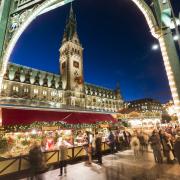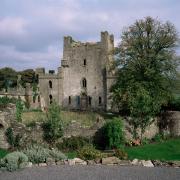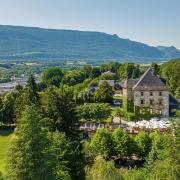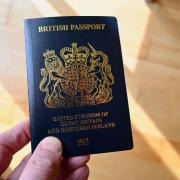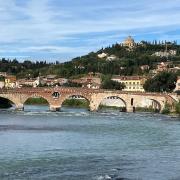There are some beautiful cities on the banks of the River Danube – elegant Vienna is one, charming Bratislava is another. But as we quickly began to discover on a three-night stay, for sheer grandeur allied to such a turbulent and fascinating history, Budapest, the so-called ‘Paris of the East’, has no equal.
As you walk through stylish, unscarred streets you feel you could be back in the late 19th century, the city’s golden age, when the great French architect Baron George-Eugene Haussman was planning the city’s grand avenues and boulevards, while his near namesake Buda-born Alajos Hauszmann was designing its spectacular buildings, such as Buda Castle, the Palace of Justice and the Parliament.
As it happens, we were booked in to stay at a hotel whose building is one of Hauszmann’s finest creations. The Anantara New York Palace Hotel, on Erzsebet Korut Boulevard, was, in its first incarnation in 1894, the European headquarters of the New York Life Insurance Company, probably the most important insurance company in the world at that time.

The magnificent exterior of the building, a heady mix of Italian Renaissance, Baroque and Gothic, still remains, replete with ornate towers, imposing statues and intricate carvings. The New York Palace was first converted into a luxury hotel in 2006, then 15 years later the Asian-based Anantura brand took it over, further investing to restore the building to its Belle Époque glory. The result is a five-star hotel with 185 rooms, numerous dining facilities – including the famous New York Café, the haunt of writers and artists down the years – and a basement spa.
Sumptuous suites with butler service are available for those with bottomless pockets, but our premium room on the fourth floor suited us just fine. It was a large space which featured a lovely king-sized double bed, large sofa and desk, and a most impressive marbled bathroom with a combined bath and waterfall shower.
We were spoilt for choice with the hotel’s eating and drinking facilities. We took dinner on our first night in the White Salon restaurant, situated on the mezzanine level. ‘Casual’ dining is the order of the day, although given the splendid surroundings, the white tablecloths, and the tuneful string trio in the corner playing Hungarian folk songs, along with a variety of classics, we were glad to have dressed up.

The following morning we headed downstairs to the Deep Water Breakfast Room, a gorgeous looking space with tables spread out between terrazzo columns and gilded stucco. A splendid looking buffet was laid out in the middle, with a huge choice of hot dishes, freshly baked bread and pastries, fruits, cheeses and granola.
Suitably fortified, we were all set to walk the highways and byways of Budapest. We were fortunate that Eileen has Hungarian cousins, and one of the younger ones, our good friend Peter Benko, sacrificed a day’s work to be our guide and proudly show off his city.
A vital place to start was Heroes’ Square, a vast boulevard and the symbolic heart of Budapest, its Trafalgar Square if you like – but with added style and monuments. Here we gazed at the Nelson-like Millennary Monument, a 36-metre high pillar topped by a golden Archangel Gabriel holding the Hungarian crown and cross. At the base are statues of seven Magyar chieftains who lay claim to founding the country.
Our exploration of Budapest’s turbulent 20th century history began in the Jewish quarter. A 30-metre Memorial Wall, which marks the border of the 1944 ghetto where 70,000 Jewish men, women and children were crammed, sits at the back of the courtyard at 15 Kiraly Utca. It’s a reconstruction – the original wall was pulled down in 2006 – but it’s still a poignant reminder of the suffering of its inhabitants, who soon afterwards would be sent on trains to the death camps.

For a journey back into Hungary’s Communist past we headed to the outskirts of the city to Memento Park. This is an open air museum that became the dumping ground for all the major monuments that once glorified the Communist ‘religion’ – 42 statues in all, that once dominated the squares, streets and parks of Budapest.
Giant statues of Lenin, Marx and Engels frame the classical façade of the entrance to the park, and just inside sits an ancient blue Trabant, the car which became a symbol of the backwardness of Communist life. Among the statues in the park, all designed in classic Socialist Realist style, is the colossal ‘Monument to the Hungarian Socialist Republic’, which needs half a field to itself.
Other excursions were an eclectic bunch – a trip to the Cat Museum (real animals available to pet), a viewing of the permanent exhibition of the work of the great Hungarian war photographer Robert Capa, and a delve into the everyday life under Communism in the House of Terror.

Buda, Pest and Obuda were united into one capital city, Budapest, in 1873. So far we had spent all our time in busy Pest, but on one night we did head across the river and up into the Castle Hill district for dinner with Peter and his family, his father Pista, uncle Mishi and other members of the Benko family.
We sat down to eat in the atmospheric Pest-Buda restaurant, which can trace its origins on this site back to 1696. The red tablecloths are redolent of a French bistro, but the food is very hearty, home-style Hungarian, with fish and goulash soup, stuffed cabbage with minced pork and sour cream, and chicken paprikash with buttered noodles.
Afterwards our party enjoyed a delightful evening walk around the historic Castle area, past the gorgeous 19th century neo-Gothic Matyas church, and the Fishermen’s Bastion, a white neo-Romanesque rampart with turrets and towers and the most spectacular view over the twinkling lights of Pest.

Beautiful Budapest – so much seen and admired, but so much left unexplored. We will be back again before too long, that’s for certain.
To book a stay visit anantara.com/en/new-york-palace-budapest





